In this 3rd part of the prosperity series, we dive into how to achieve unity in Somalia. The two previous parts covered the settling of the nomads and industrialization of Somalia. To get an overview of this prosperity series, see the overview article here.
History Of The Somali Clans
Somalis are a cushitic population with roots in East Africa and closely related both genetically and linguistically to other cushitic groups. Although different origins have been proposed, the early Somalis eventually diversified into clans and later, subclans.
In Somali society, the clan has consistently occupied a central role in the way of life. The clan played various roles, contributing to both conflicts and resolutions. It served as a protective system, facilitated unity through marriages, and mediated disputes over grazing rights, land, and access to water. Xeer, a traditional Somali legal and social system, was employed by clans to establish peace, compensate victims, and resolve disputes. In the past, the patriarchal clan-based system was deemed essential by the Somali people, promoting virtue and deterring wrongdoing.
The Quran references clan (or tribal) divisions, emphasizing its role in recognition and kinship formation. However, in contemporary times, the clan has gained infamy for dividing the Somali people, fostering unnecessary bloodshed, and perpetuating nepotism and animosity among clans and subclans.
Political unity in the 4.5 system
With the arrival of Europeans in the African continent, the concept of democracy also made its way into Somalia. The traditional Xeer system and the authority of elders overseeing clan matters were permanently replaced by democracy during the period of independence, followed by a subsequent period of communist dictatorship ruled by Siad Barre until 1991.
Following the overthrow of Barre, a power vacuum emerged, leading to intense competition among clans to fill this void. This struggle gave rise to the prolonged civil war that inflicted lasting damage on the nation. In an attempt to halt the bloodshed and chart a path towards peace, the 4.5 system was created, which is a clan-based mechanism for sharing political power and ensuring no specific clan takes over. This system categorizes the four major clans in Somalia (Darood, Hawiye, Dir, and Rahanweyn) as one unit, while the minority clans are collectively considered as half, however today the system follows a 5.0 structure as illustrated below.

Federal Government of Somalia cabinet composition in the last two terms measured as a ratio of 4.5.
Source: Somali Dialogue Platform.
Leadership positions are exclusively reserved for the two major clans, Hawiye and Darood, with the other two major clans securing alternative roles within the government.
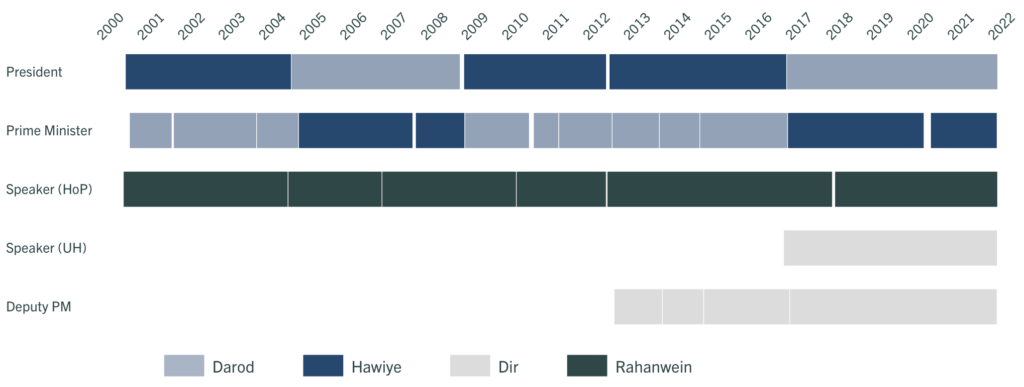
National/federal leadership positions by clan family, 2000–2022.
Source: Somali Dialogue Platform.
Initially conceived as a provisional measure to navigate the country out of the civil war, the 4.5 system has now entrenched itself as a permanent fixture in Somali society. Regrettably, it has become a source of division, nepotism, and injustice. This, on top of the indirect election process in Somalia has resulted in elite-dominated politics with high degrees of political interference and corruption.
From a political point of view, Somalia needs to move to a more inclusive and meritocratic (meaning power held by competent leaders with relevant education and experience) system. Moving on from the 4.5 system can either occur gradually in steps or rapidly with a full abandonment. On the road away from this system lies the one-person-one-vote process, where each citizen choose their leaders directly – a process which the government has tried to implement for some years which is planned for the next election.
However moving away from the clan based system at the top is not enough. At the same time, we need to transcend the clan-based mentality on a general level and mix up the population.
Unity among the split people
Somalia’s political structure is federal parliamentary republic. The power is divided between the central government in Mogadishu and each of the federal states. The federal states, however, greatly resemble the different clan regions in Somalia as you can see in the two maps below. Most of the population live in their own clan regions.
IMAGE: USE THE SLIDER IN THE MIDDLE TO SWAP BETWEEN CLAN REGIONS AND THE STATES
USE THE SLIDER IN THE MIDDLE TO SWAP BETWEEN CLAN REGIONS AND THE STATES
Federal states of Somalia: The historically disputed area between Puntland and Somaliland was the center of the recent Las Anod conflict, and an example of clan clashes. Source of data: OCHA, Clan image source: EUAA report 2021
When asked about whether federalism is the path forward President Hassan Mahmoud Sheikh argued that without it we risk dividing the country further. This makes sense, as Somalia is relatively large, and in order for the central government to have full control, there needs to be allied regional governments.
The current divisions of Somalia can be seen in these maps below:
- Federal states = 8
- Regions of Somalia = 18
- Cities of Somalia = 74
- Districts of Somalia = 315
However clan-based divisions do not create unity in Somalia. A divided population is a weak population. Even the European colonialists could not unite their regions but instead maintained and sometimes exacerbated existing clan divisions. For Somalia to move forward there needs to be a sense of unity throughout the country as we partly saw in the 70s and 80s.
At some point, Somalia needs to mix up the population further in order to develop. People need to travel freely from one region of the country to another; be it for education, jobs or simply vacation. These divisions do not need to be political. They can be industrial, educational, or economic. Regardless, it should de-emphasize ethnic/clan-based regions and encourage strategic and practical divisions that promote peace, unity, and prosperity.
Below, we have drawn 3 examples of new divisions of Somalia into provinces, that break clan-based divisions and could promote the mixing of the population. We have examples of clan-disruptive divisions and divisions that merge existing federal states. The exact borders for each province can be moved for optimal divisions and unity, for now regard these should be considered as examples.
Imagine each province having football leagues, universities, political and economical responsibilities – without any connection to a particular clan. Each citizen and politician being responsible for their own province regardless of clan status. Each individual fighting for their neighbors and fellows based on real encounters and national unity rather groups based on minor ancestral differences.
How could unity look in Somalia? The following video provides a great historical insight of the 70s when Somalia experienced most unity. President Siad Barre created special orientation centers with the focus of promoting national unity and eradicate ancient clan-divisions. People came together from all over the country, united and voluntarily, to drive Somalia forward.
Somalia is regarded as one of the most homogenous population. We are simply all Somalis – same language, same ancestry, same religion, same skin color, and same issues. Yet we have found ways to divide ourselves and fight like football hooligans with weapons while most other countries including many of our very own neighbors live in harmony with people from different religions, ethnicities, languages, and cultures. Even among people who they used to commit genocides and horrendous war crimes. Our clan issues seem minor in the big scheme of things.
Rwanda’s clan-based genocide and its current success
The Rwandan genocide of 1994 was a clan war between the Hutu and Tutsi people, resulting in ethnic cleansing of ca. 800,000 mostly Tutsis. During this time, Rwanda was a failed country by every means, but somehow after a genocide it is one of the most successful countries in Sub-saharan Africa. The government has focused on national unity, reconciliation, and addressing issues of ethnicity and identity that were contributing factors to the genocide.
Rwanda moved away from ethnic divisions and promoted a national identity. This has prevented conflicts based on ethnicities since there is now unity in the diverse population. Some approaches have been removing ethnicity from ID cards and encouragement of intermarriage. Reconciliation was obtained through a process called “Gacaca”, which means ‘short grass’ – a public place where male eldes come together to solve.
We have a similar informal conflict resolution approach in Somalia, where clan elders and religious leaders come together under a negotiation tree or other place.
If we take a look in Europe, horrible wars and atrocities have been committed in most countries historically, and especially within the past ca. 100 years. The situation has been so dark, that new methods were invented for killing humans, and their conflicts spread so much they managed to involve most of the world. However, the tension is almost completely gone today, and one can travel freely within most of Europe without even showing a passport.
Other countries have had worse tensions than Somalia, and they have managed to resolve their issues. Thus, the same is plausible for Somalia.
Unity through economy
People do not move to mix for the sake of mixing. What mixes people in most countries are job opportunities and education, and Somalia needs to use this strategically. With many economic opportunities come the increased income potential which will force the Somali people to leave their clan-based region and seek access to job markets with high demand in other regions, thus uniting the nation as more and more regions become economic hubs with mixed populations.
There is a huge potential for job creation in Somalia, and so much of the country’s resources remain untapped. We’ve already covered urban development, but each region in Somalia has the potential for generating economic growth in various sectors. Take a look at the 6 maps below covering: Wind energy, Solar Energy, Agriculture, Transportation, Port development, and Ecotourism. These sectors and related fields have the capacity to create millions of jobs.
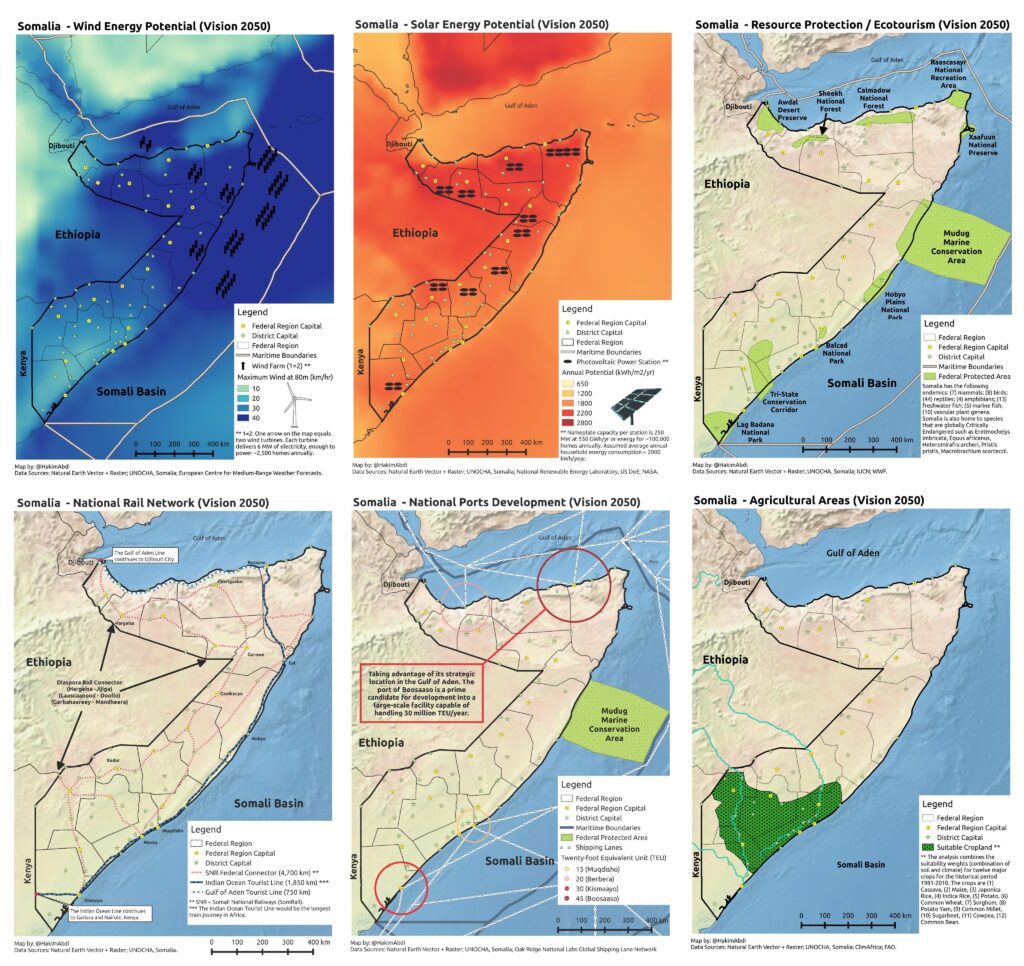
It is based on sustainable, economic development that taps into the country’s strong potential for renewable energy, ecotourism, and becoming a trade hub through its ports and rail network.
With the wind and sun in the north, agriculture in the South, and strategic locations for ports Somalia can grow out of the “failed nation” label. Source: @hakimabdi
Conclusion
If Somalia is not united, it will never be successful. To be clear, we do not think clans should be eliminated as they have important cultural and social value, however we need to return to the broader national focus there used to be in the years between Somalia’s independence and the beginning of the Somali civil war. This will inevitably be good for each citizen of Somalia, each region within Somalia, and for the entire country as a whole in addition to the near and far diasporas. If the focus is on the economy and jobs, we believe most other prosperous movements will follow, including mixing of Somalis, education requirements for jobs, better healthcare, preventing youth joining terrorist organizations, prevention of the severe drought and flooding issues and hopefully prevention of social injustice and clan warfares.
Somalia’s issues are not unique, they just seem that way because we are so focused on ourselves and the current time period. Great progress is being made, and we should support the efforts and actively oppose toxic and senseless clanism. A Somali is a Somali, regardless of clanship – it is time we recognize this and work together towards prosperity!
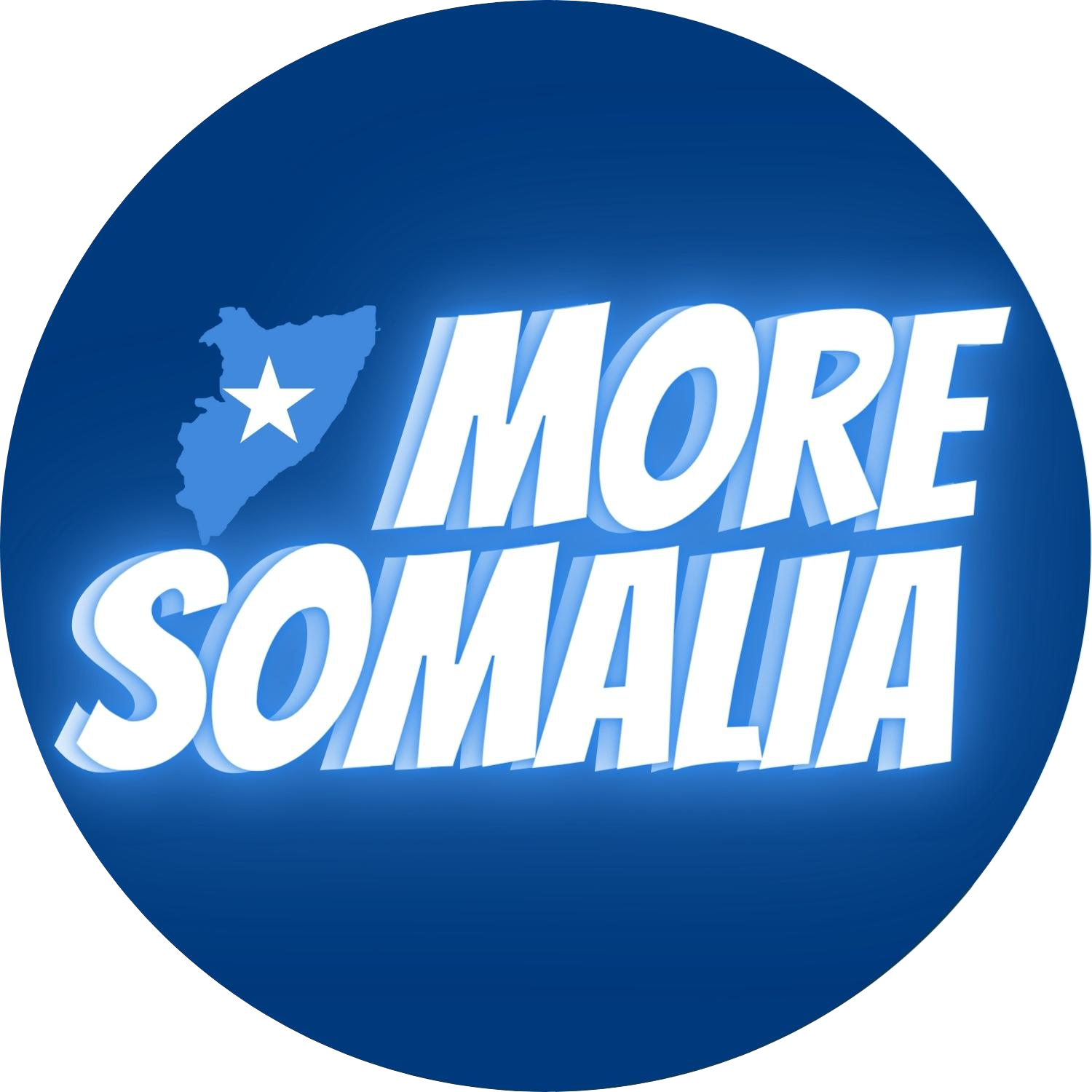
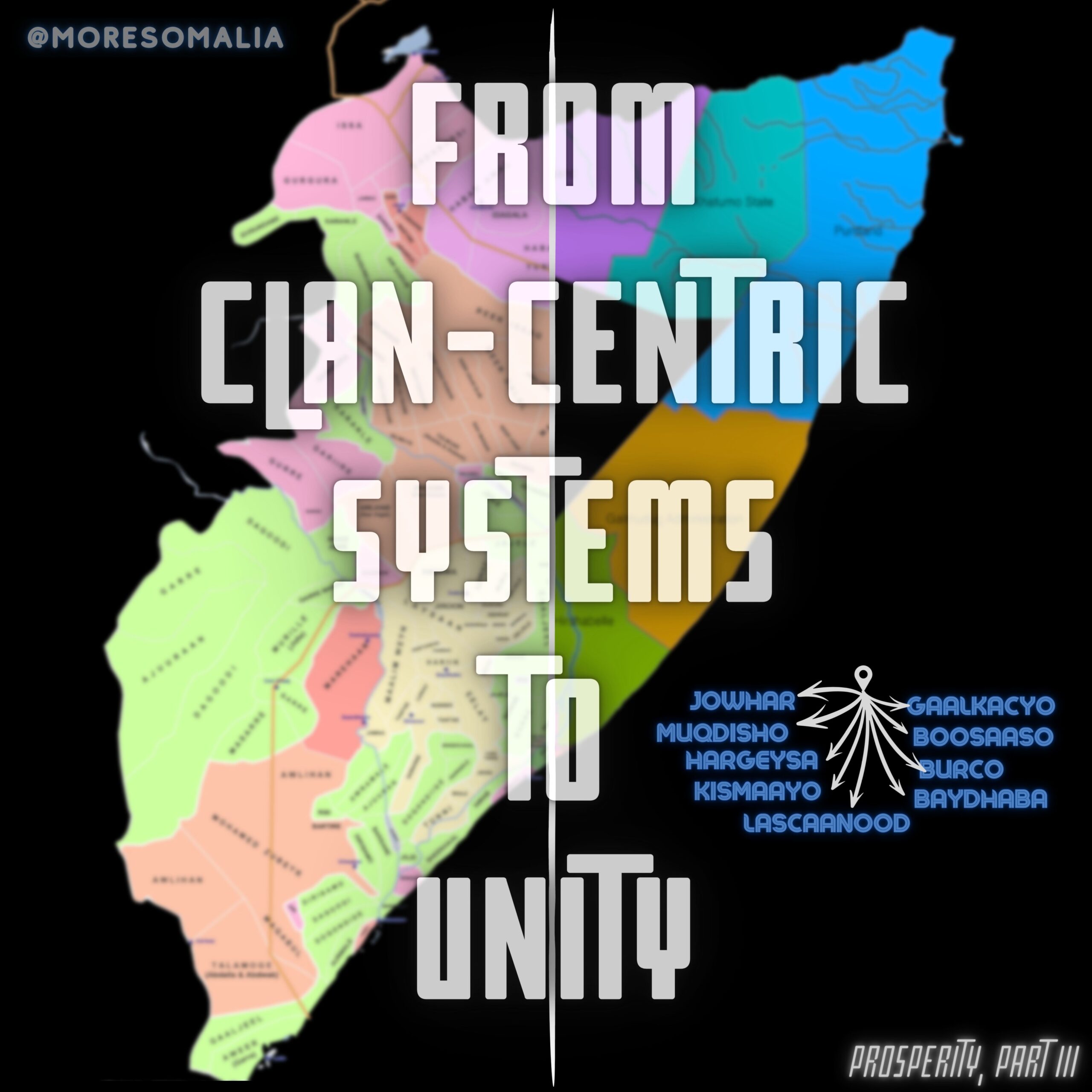
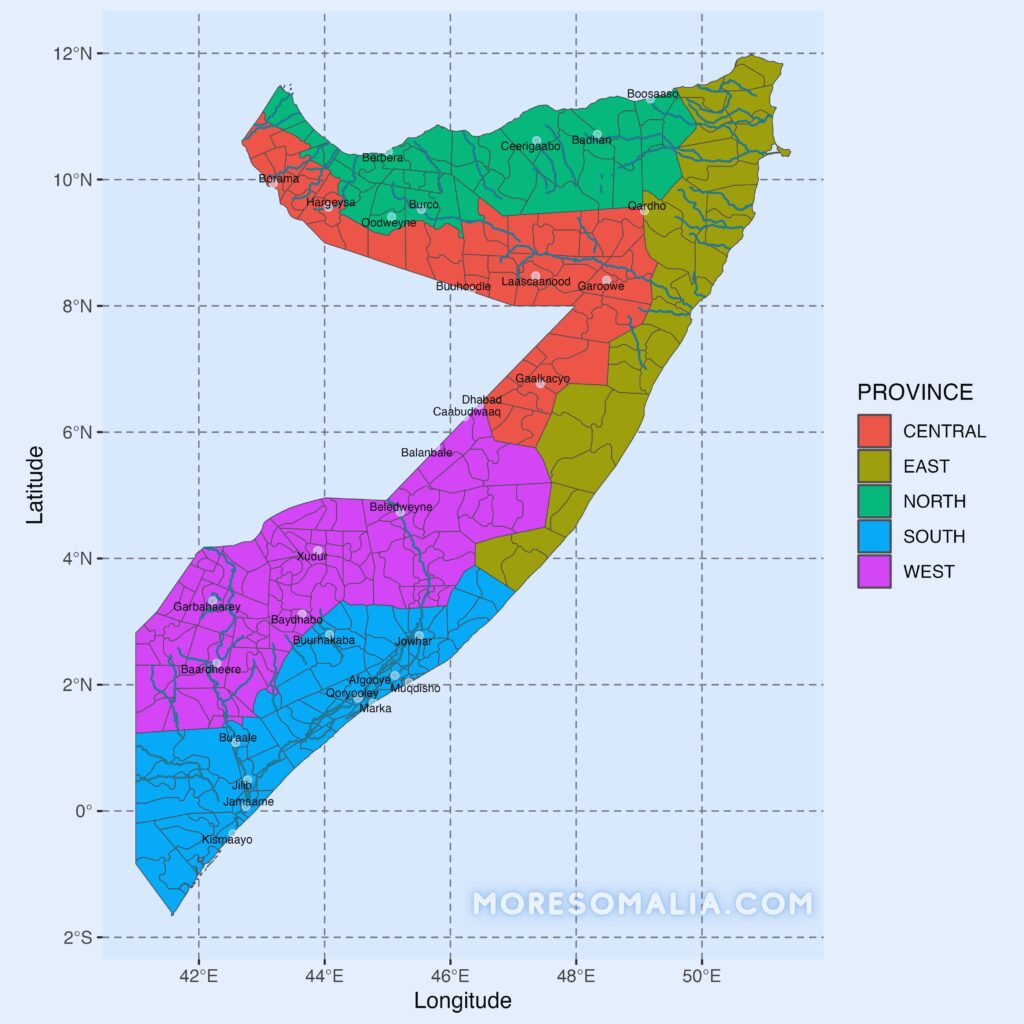
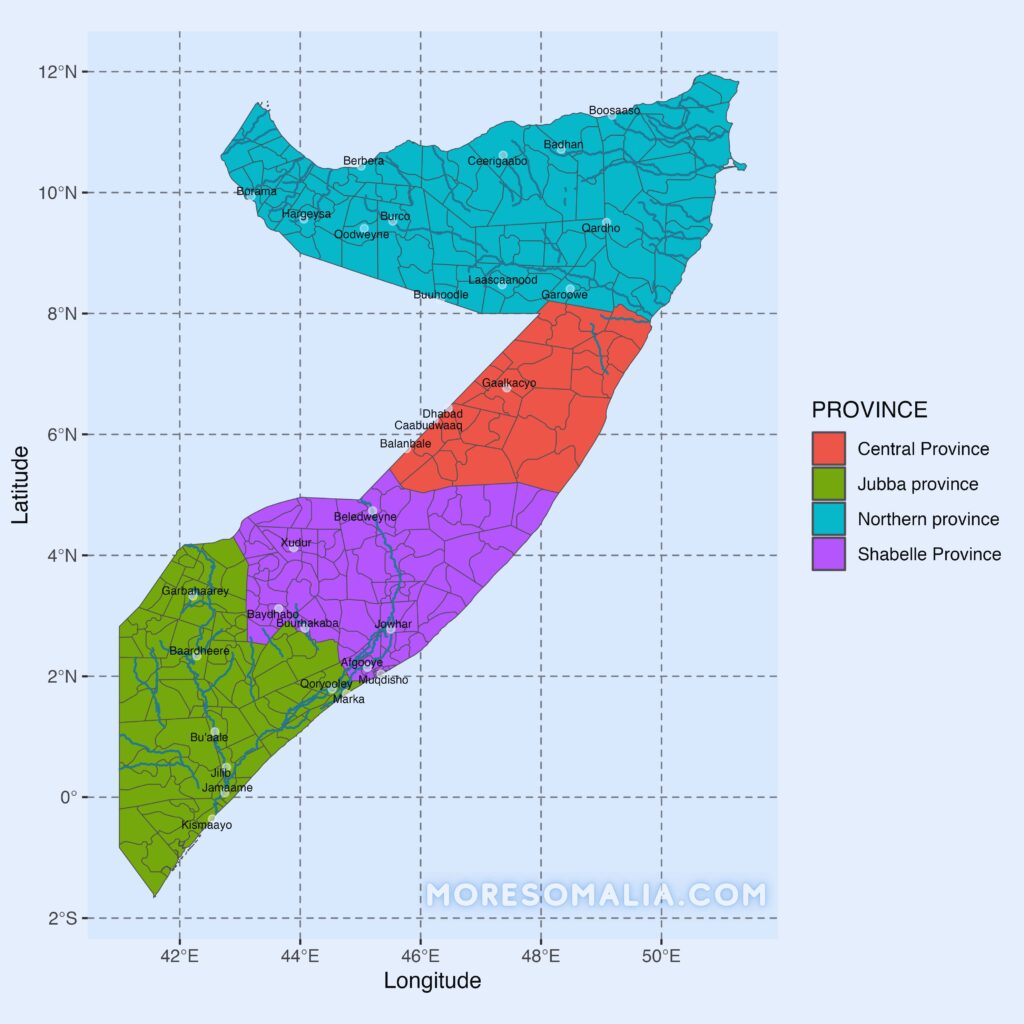
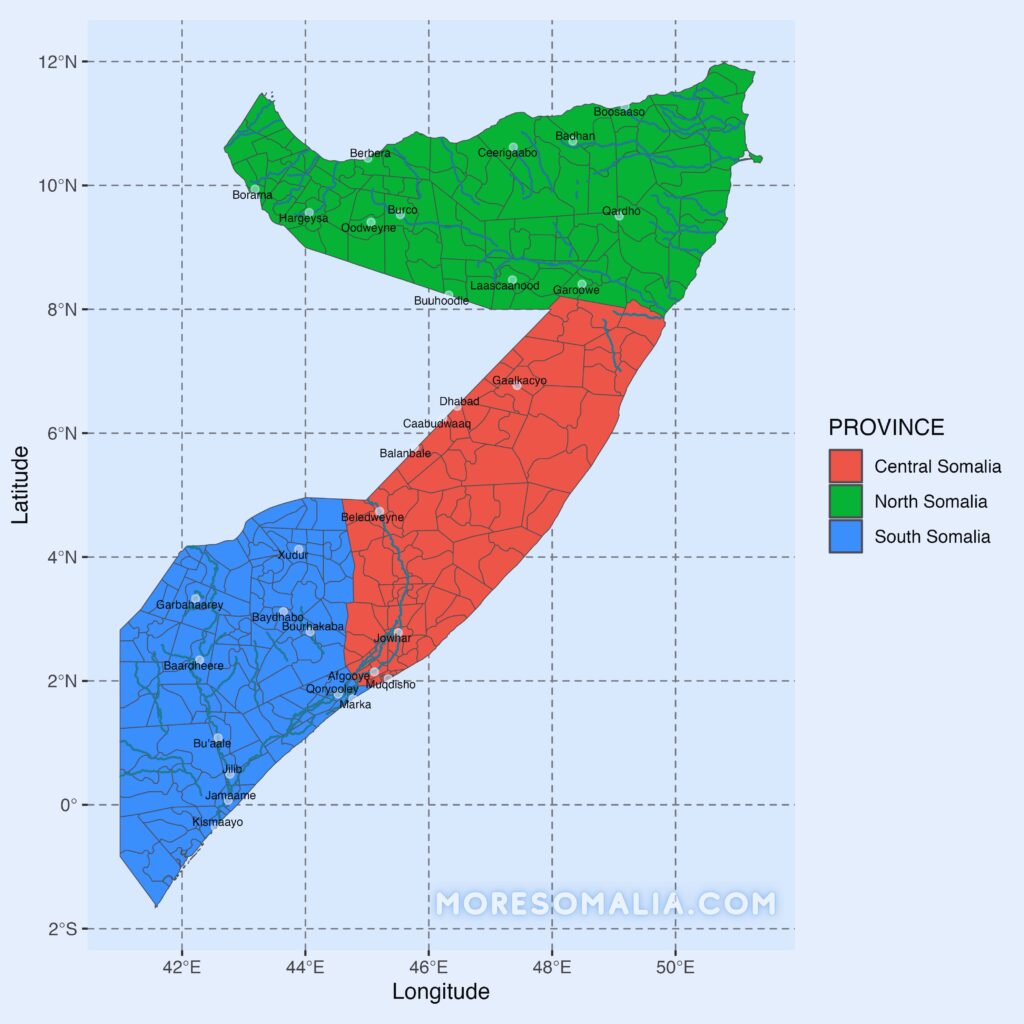
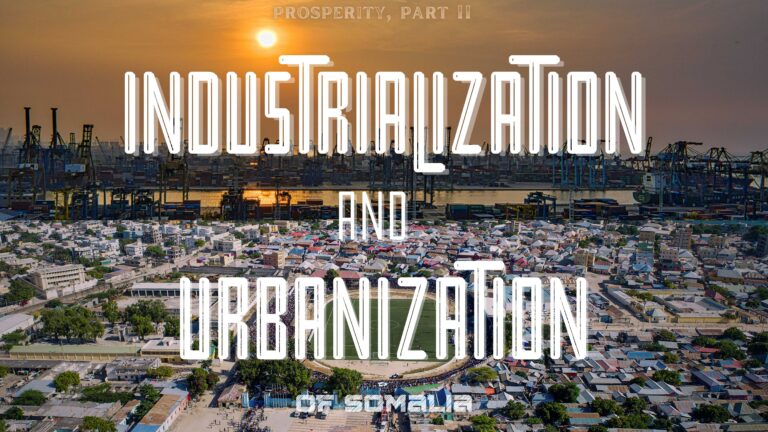
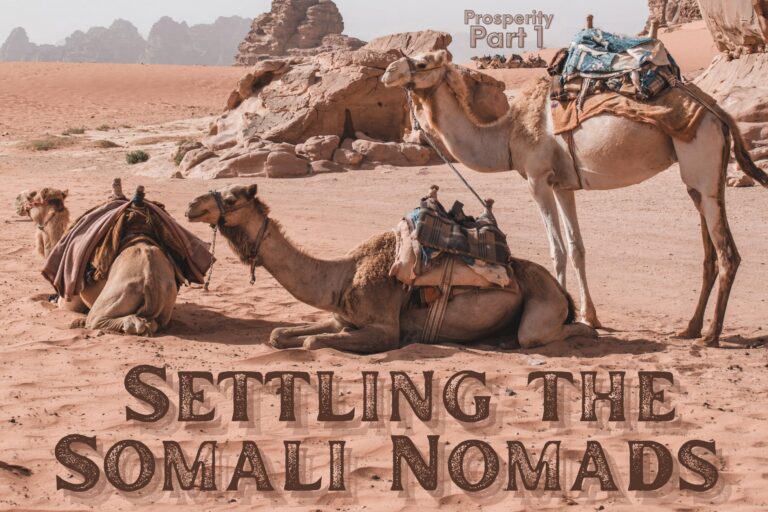
[…] The mixing of the Somali population […]